Best 360 cameras in 2025
The best 360 cameras offer ease of use, water resistance, video quality, and field of view: We’ve tested and ranked the best ones for you.
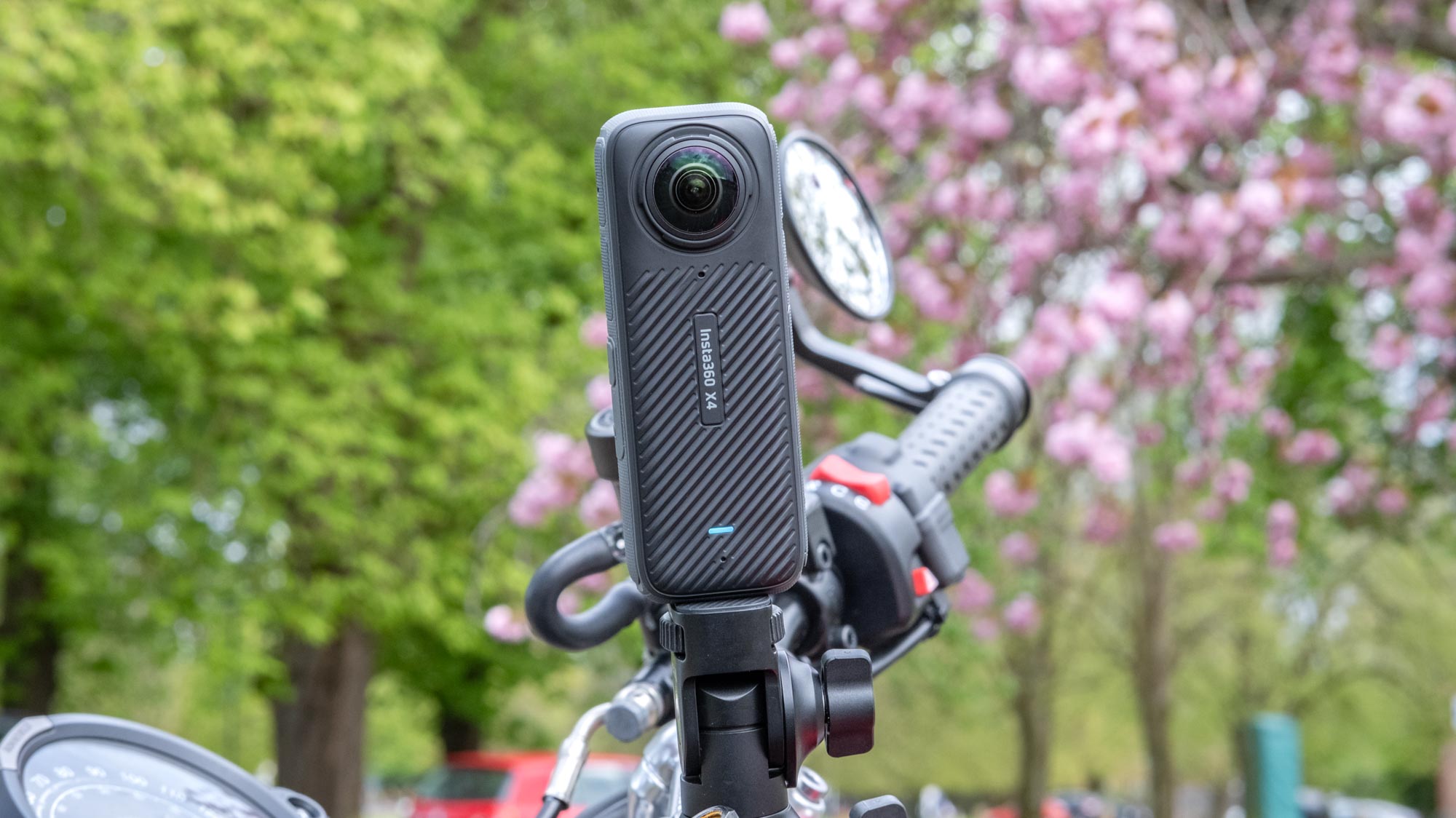
The best 360 cameras might be just what you're looking for if you’re a content creator or love to record action videos. These panoramic cameras capture everything around you, making for incredibly immersive experiences.
But the best 360 cameras have another trick: super-smooth video. That's because they can identify the horizon and automatically level your video, no matter how bumpy. Try that with a regular action camera and see what happens.
From their earliest iterations just a few years ago, 360 cameras have come a long way. Not only are they smaller these days, but companies have added more sophisticated technology so that you can track people and objects, no matter where they move around you.
The best 360 cameras you can buy today
Why you can trust Tom's Guide
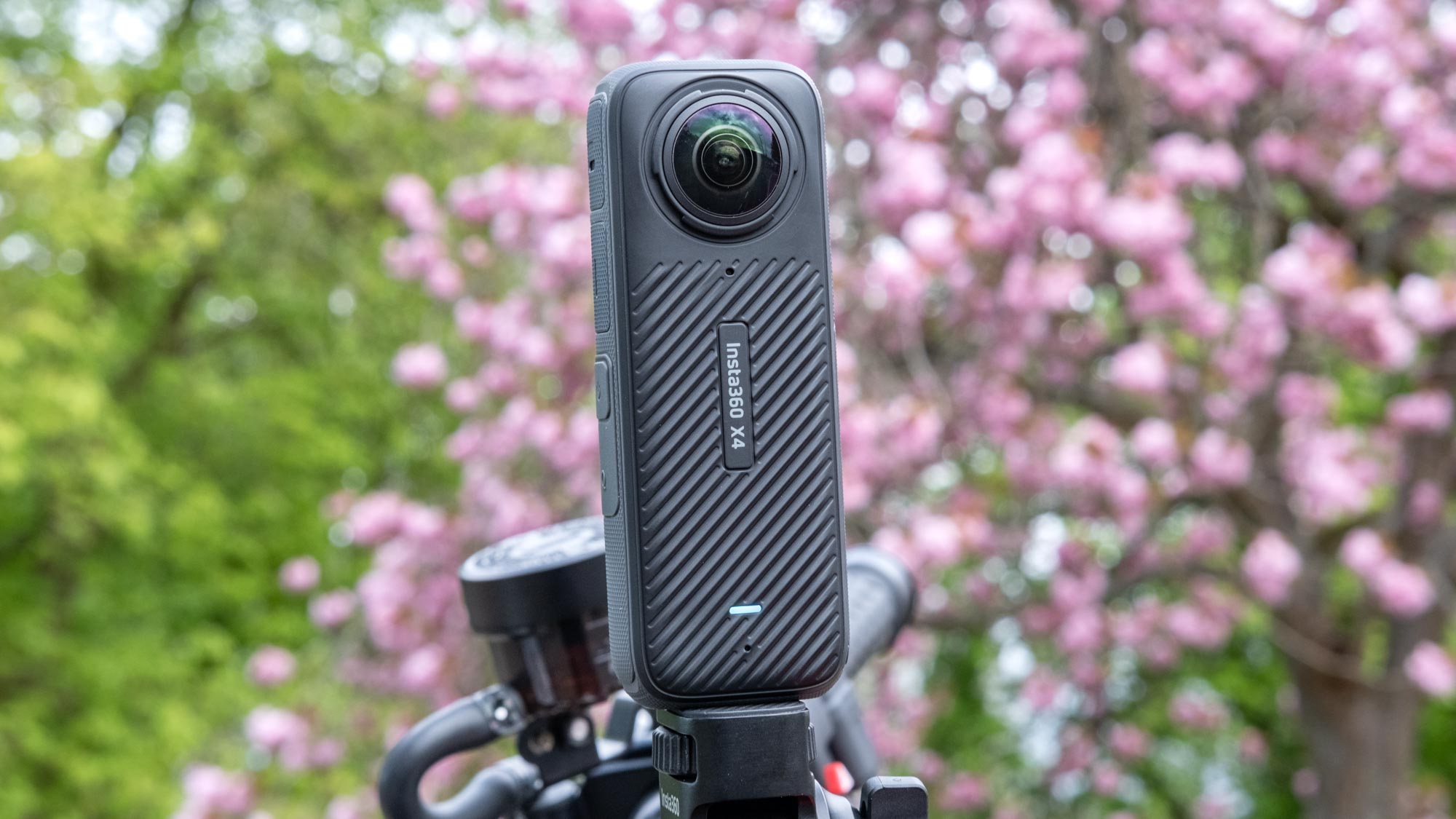
Specifications
Reasons to buy
Reasons to avoid
The Insta360 X4 is the best 360 camera you can buy (and the best 360 camera ever made) right now. It offers 8K/30p recording, which equates to 2.7K resolution when reframed in 16:9. This is a big step up over previous iterations and action cameras, which could only reframe at 1080p.
The stablization is fantastic, the internal mic is decent, build quality is excellent and the X4 has a bigger screen than the X3, which is bright and responsive. It also comes with some nifty new features, including MeMode, which allows you to achieve the invisible selfie stick effect in 16:9 at 4K/60p in camera. It's also waterproof down to 33ft (10m) like its predecessor.
The best thing about the X4 (aside from the increased resolution, of course) is its battery life. The X4 has an upgraded battery versus the X3, which equates to over 50 minutes longer at 5.7K (135 minutes in total). It shot 8K footage for 73 minutes in testing, which is very impressive. When used as a 4K single lens action camera, we got over 110 minutes at 4K/60p, which is much better than even the best action cameras around.
Read more in our full Insta360 X4 review.
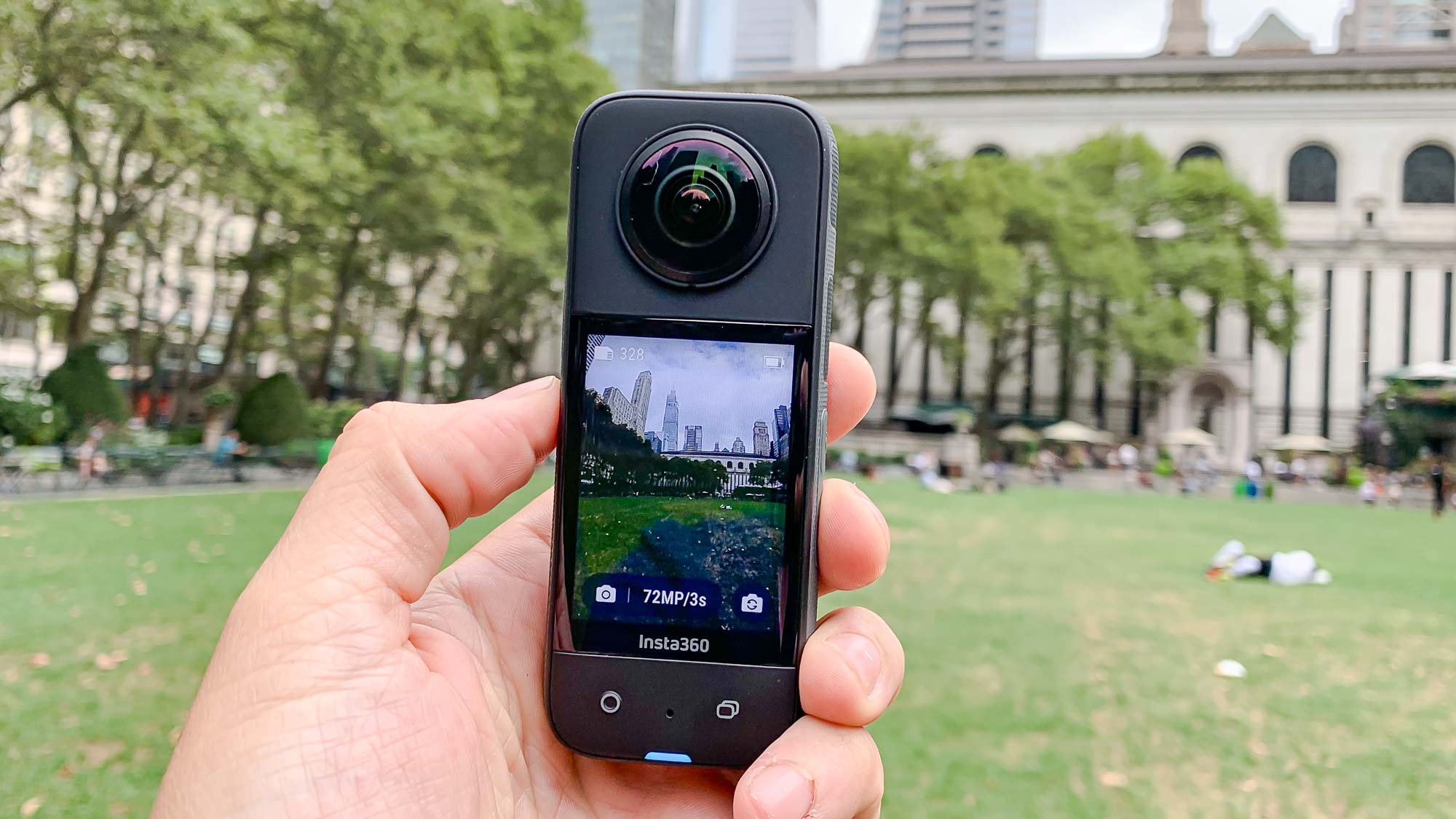
Specifications
Reasons to buy
Reasons to avoid
The Insta360 X3 is the best 360 camera for most people. That's because, like its predecessor (the X2), the X3 has the most innovative software and features in addition to being a great piece of hardware.
The X3 is water resistant to 10 meters (33 feet), and has a much larger touchscreen display than its predecessor, which makes previewing video and changing settings on the fly easy. It also has a decent battery life of up to 80 minutes.
The X3 has fantastic image-stabilization feature that will make even the bumpiest videos look smooth, and can capture 5.7K video at 30 fps, and 4K video at up to 60 fps. Its FlowState image stabilization algorithm helps smooth shots, and a TimeShift feature lets you slow down or speed up specific segments of your videos.
Read our full Insta360 One X3 review.
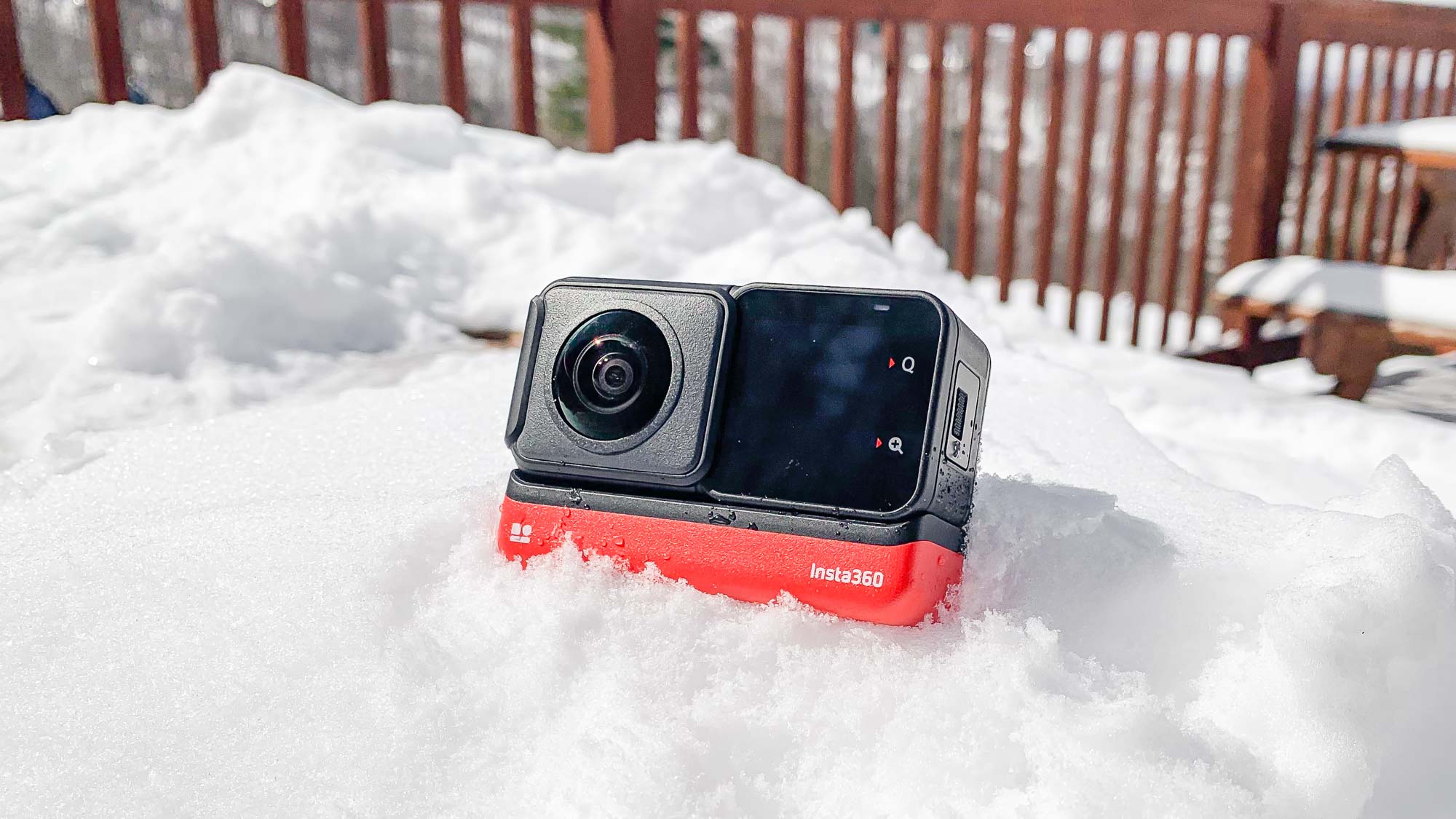
Specifications
Reasons to buy
Reasons to avoid
For those looking for a 360 camera with more of a traditional action camera design, the Insta360 One RS is your best bet. Like its predecessor, the Insta360 One R, this innovative camera has a modular design that lets you swap out its 360 lens for a wide angle 4K camera or a camera with a 1-inch sensor. What's more, the camera has some other pretty cool features, including video stabilization and a comprehensive app that has a lot of powerful editing tools.
We like that the One RS' display can be turned around so you can frame yourself in videos, but its small size relative to the GoPro makes it much more difficult to navigate on-screen menus. And, like older GoPros, you'll need to use a frame to mount it to anything. But, this is one versatile 360 camera.
Read our full Insta360 One RS review.
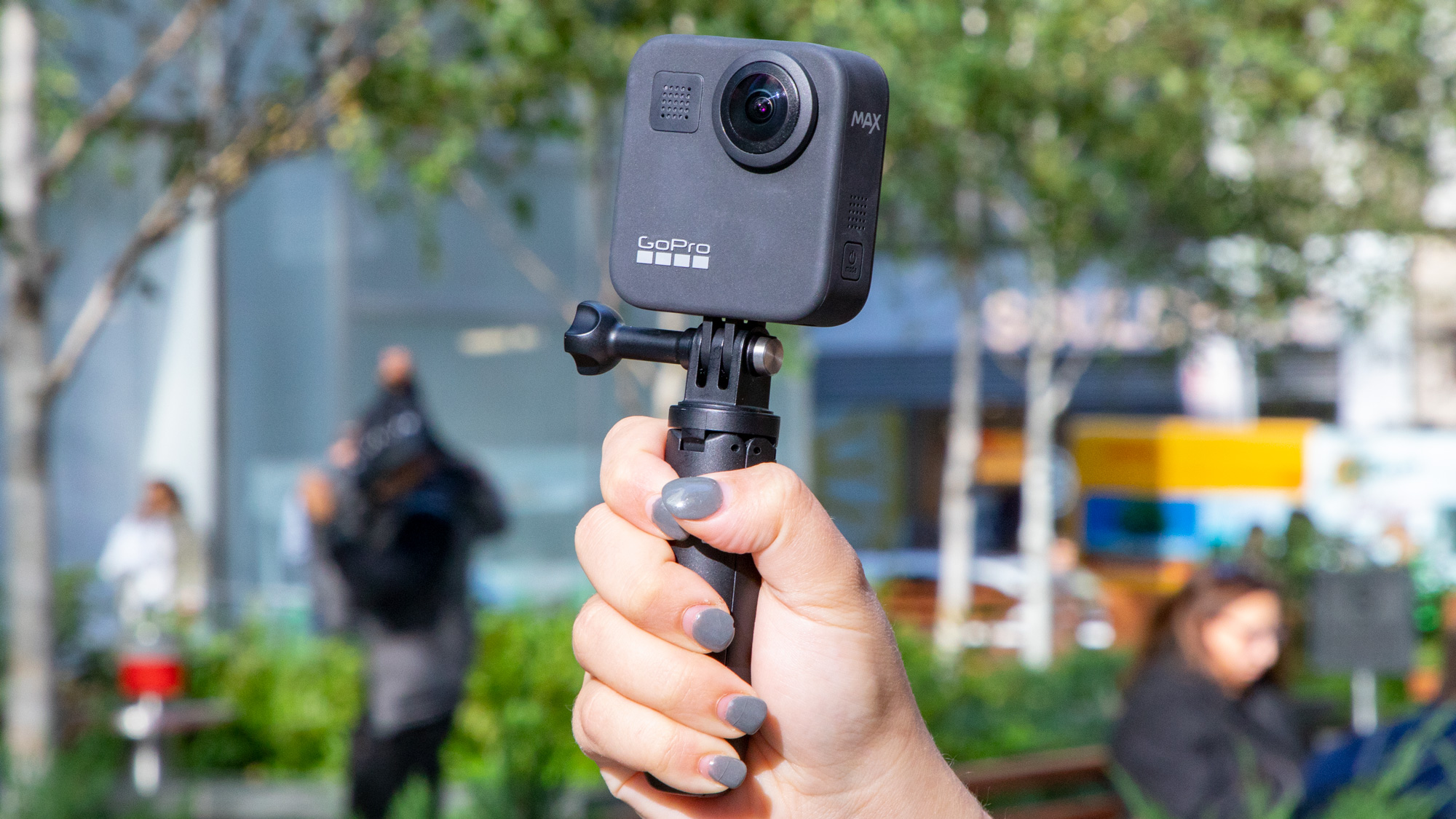
Specifications
Reasons to buy
Reasons to avoid
Unlike most 360 cameras, the GoPro Max has a small display on its back that lets you view what its cameras are looking at. While it's not as handy as it seems, the large display does make it easy to navigate and change the Max's settings without having to use your smartphone.
The GoPro Max also has a HyperSmooth stabilization feature, so your bumpy video will look nice and smooth, and image quality from the camera — up to a max resolution of 5.6K/30 fps — lives up to GoPro's typical high standards. Plus, GoPro's app is loaded with features, including the ability to livestream video from the Max.
However, the GoPro Max's design requires the use of a selfie stick, and lacks a tripod mount, so you have to use it with one of GoPro's accessories. At $499, it costs more than the Insta360 One X2, but the GoPro Max delivers.
Read our GoPro Max review.

Specifications
Reasons to buy
Reasons to avoid
One of the issues with 360 cameras is that, because of their relatively small sensor size, they're not that great when it comes to low-light photography and videos. If you need a 360 camera for that purpose — and price is no object — then you should consider the Ricoh Theta Z1. This well-built device uses two 1-inch, backside-illuminated CMOS sensors, which helps deliver some of the best images we've seen from a 360 camera, especially under less than ideal conditions.
Additionally, the Theta Z1 has dual microphones, which delivered great audio, and the camera's motion stabilization was pretty effective too. The Z1 uses an Android-based operating system, and Ricoh is letting third-party developers create plug-ins for the camera, increasing its functionality. However, this camera lacks expandable storage, it has a relatively short battery life, and you need to use two different apps if you want to edit photos or video. But if you prize image quality above all else, this is the camera to get.
Read our full Ricoh Theta Z1 review.
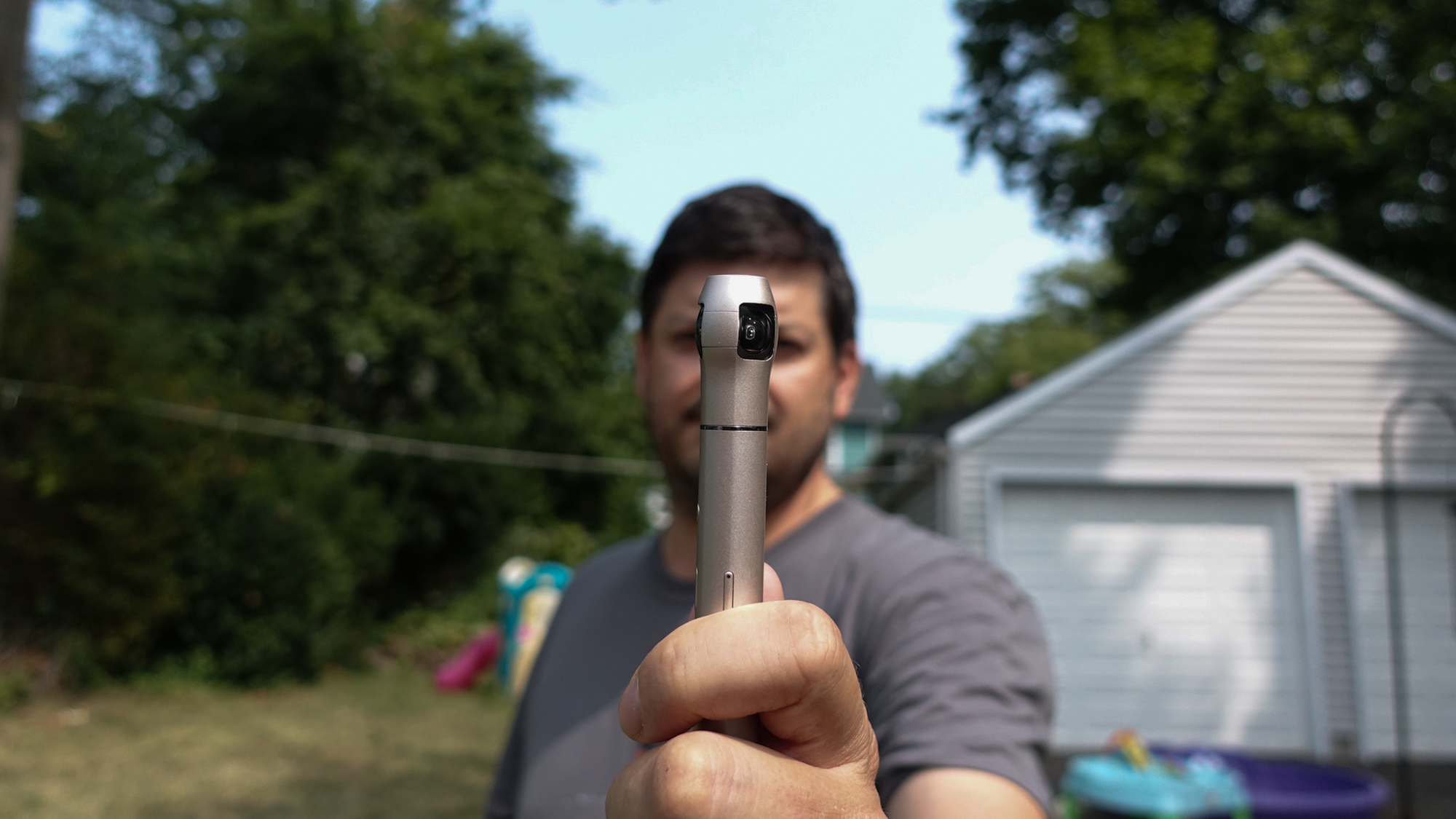
Specifications
Reasons to buy
Reasons to avoid
The Vecnos Iqui is a 360 camera designed for those who want to take photos or videos at a moment's notice. The camera starts up in a flash, and snaps pics just as quick. Its small, pen-like shape makes it a cinch to store in your pocket, too.
Iqui’s app then takes your photo and turns it into a mini-movie, which you can then share with the rest of the world. While the quality of its images aren't up to the level of the Insta360s' or the GoPro's, the Iqui's ease of use will make it attractive to the influencers of the world. However, we wish there was more you could do in its app.
Read our Vecnos Iqui camera review.
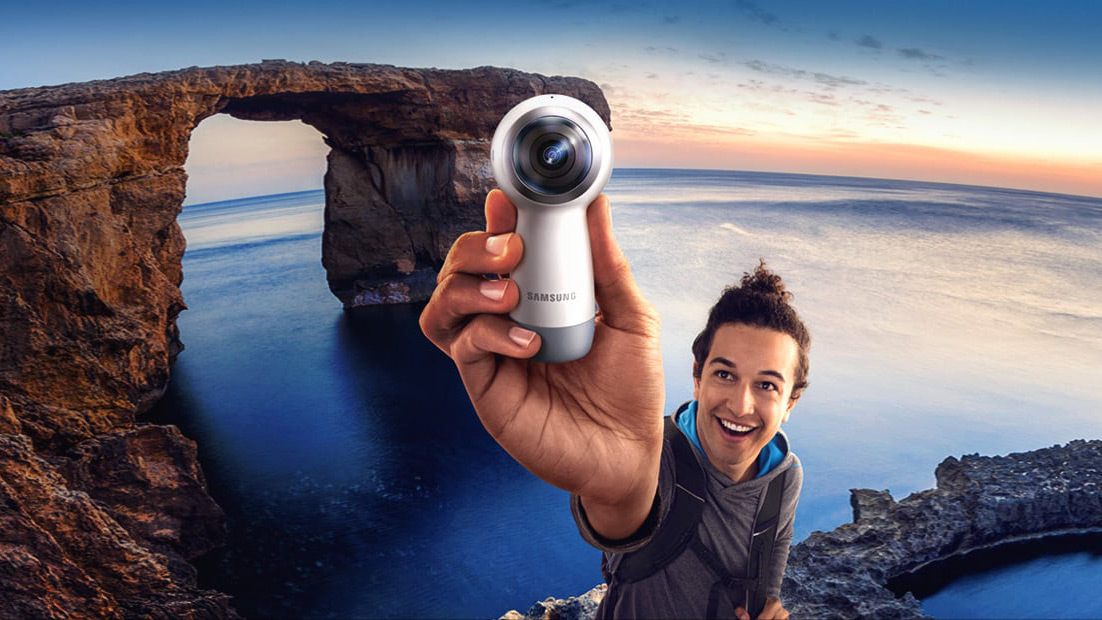
Specifications
Reasons to buy
Reasons to avoid
Samsung was one of the first companies to make a truly useful 360 camera, and though it's been several years since it released anything new, its Gear 360 camera from 2017 still remains a fairly useful and functional device. The Gear 360 has a fun, lollipop-like shape that makes it easy to hold in one hand, and can even withstand a few splashes. It also has a tripod mount, if you want to attach it to your bike or something else.
The Gear 360 takes good photos and videos (up to 4K in size), and livestreams to Facebook and YouTube, too. However, there are a few big caveats: it only works fully with Samsung smartphones (from the Galaxy S6 and up), and while it works with the iPhone 7 and later, not all of the camera's features are supported. If you have a Samsung smartphone, though, the Gear 360 is a fun accessory.
Read our full Samsung Gear 360 review.
FAQs
What is a 360 camera?
Simply put, a 360 camera records a full 360-degree field of view, meaning it captures everything around the camera, rather than the restricted fields of view of, say, a traditional action camera.
How do 360 cameras work?
By having more than one lens, with a wide field of view, a 360 camera can "see" in 360 degrees. If each of those lenses targeted onto a sensor, you then have a recordable 360-degree view!
This often involves placing the lenses opposite one another, though, as you'll see with the Insta360 X4, so most 360 cameras use more than one sensor (one per lens usually). The camera then stitches together the images from each lens (so 180-degrees per lens on a two-lens camera) to create a 360-degree FoV. This often results in "stitching" lines being visible in footage, where the fields of view haven't met up perfectly, overlapping or missing small slivers instead.
Here's where things get interesting. The maximum resolution of the camera (i.e. 8K for the Insta360 X4) is for all the sensors combined, so that full 360-degree FoV. If you then want to export in 16:9 for people to watch on YouTube, you'll need to crop into that image and will lose resolution.
What should I look for when buying a 360 camera?
The main factor to consider, as long as you have the budget, is maximum resolution. Above, I explained how 360 cameras work and that if you want to reframe your footage to 16:9 to actually view it (you can't view 360 degrees on a screen), you're going to be losing lots of resolution.
A 4K 360 camera will only reframe at around 1080p usually. You want as much resolution as possible, so that when you reframe, you have a better quality image. The Insta360 X4 is currently the highest res camera, at 8K, which means you can reframe to 2.7K in 16:9.
You'll also find that they tend to fall into two camps: small, pocketable stick-style devices, and larger squarish (or circular) cameras. The former tend to be less expensive, and are designed for more casual and impromptu shooting. In the second category are cameras such as the Insta360 X4 or GoPro Hero Max, which are larger and more expensive, but tend to produce higher-quality video. Generally, the design of the latter type of 360 camera also means you'll have to attach it to a tripod or some other mount if you want to capture good footage.
Be sure to think about how you plan to use a 360 camera before you purchase it; if you want to get some fun selfies with friends, then the stick-style cameras will fit your needs well. If you want to capture hair-raising exploits when you go skydiving or skiing, then a larger camera may be the better option.
How we test 360 cameras
As reviews and cameras editor here at Tom's Guide, I test all the latest 360 camera releases in the same way. Now, there's only one real way to test 360 cameras, and that's to strap them to yourself or something else and get shooting! Before I do that, though, I subject each camera to our usual evaluations: price, build quality, styling and overall design, number of ports, etc.
I then shoot footage in each camera's full 360-degree FoV mode. While I'm shooting, I'm analyzing each camera to see how they perform: do they overheat? How long is the battery life? How easy is the camera to control and change settings on while I'm shooting? How many recording features are available to me? And more.
I then always analyze the footage in whatever companion software the camera comes with, looking at image quality, contrast, lens artefacts, and stitching. Naturally, I also test how many features the companion software offers, and how easy it is to use (360 footage needs lots of tweaking and adjusting in software).
Finally, I reframe the footage to 16:9 to get an idea of how sharp the final footage looks.
- Don't need a 360 camera? Check out the best action cameras
- Best GoPro camera: Which is right for you?
Be sure to check out all of our camera picks:
Best cameras | Best DSLR cameras | Best action cameras | Best waterproof cameras | Best point-and-shoot cameras | Best instant cameras | Best mirrorless cameras | Best cheap cameras | Best GoPro camera | Best GoPro accessories | Best drones | Best iPhone lenses | Best iPhone tripods |DSLR vs. mirrorless | Best Nikon accessories | Best Sony a6000 accessories
The best apps and software for editing, managing, and sharing your photos:
Best photo organizer apps | Best photo storage sites | Best photo editing software | Best photo editing apps | Best photo collage apps
Sign up to get the BEST of Tom's Guide direct to your inbox.
Get instant access to breaking news, the hottest reviews, great deals and helpful tips.

Peter is a Senior Editor at Tom's Guide, heading up the site's Reviews team and Cameras section. As a writer, he covers topics including tech, photography, gaming, hardware, motoring and food & drink. Outside of work, he's an avid photographer, specialising in architectural and portrait photography. When he's not snapping away on his beloved Fujifilm camera, he can usually be found telling everyone about his greyhounds, riding his motorcycle, squeezing as many FPS as possible out of PC games, and perfecting his espresso shots.
